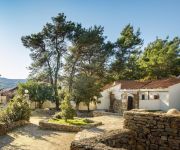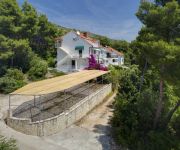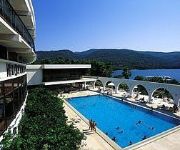Facts and Data
Webpages:
Official Unesco Page
starogradsko-polje.net
Basis Data:
Unesco World heritage since: 2008
Size of heritage: 1,377 ha
- Buffer zone: 6,403 ha
Coordinates:
Longitude: 16,639°
Latitude: 43,182°
Summary
Stari Grad Plain on the Adriatic island of Hvar is a cultural landscape that has remained practically intact since it was first colonized by Ionian Greeks from Paros in the 4th century BC. The original agricultural activity of this fertile plain, mainly centring on grapes and olives, has been maintained since Greek times to the present. The site is also a natural reserve. The landscape features ancient stone walls and trims, or small stone shelters, and bears testimony to the ancient geometrical system of land division used by the ancient Greeks, the chora which has remained virtually intact over 24 centuries.
Location on Map
Show bigger map on Openstreetmap
Stari Grad Plain: A UNESCO World Heritage Site in Croatia
The Stari Grad Plain, located in the Split and Dalmatia Counties of Croatia, is a UNESCO World Heritage site that holds immense historical and cultural significance. Spanning over 1,600 hectares, this agricultural landscape is a testament to the ancient Greek colonization of the island of Hvar and its subsequent development over the centuries.
History
The Stari Grad Plain, also known as the Ager or Hora, was established by Greek settlers from the island of Paros in the 4th century BC. These settlers, led by the Greek philosopher and mathematician Aristotle's pupil, Dionysius the Elder, founded the town of Pharos, which is now known as Stari Grad. The plain was meticulously planned and divided into rectangular plots, each measuring approximately 180 by 900 meters.
For centuries, the Stari Grad Plain served as the main agricultural area of the island, providing sustenance to its inhabitants. The Greek settlers introduced various farming techniques, including the use of stone walls to create terraces, irrigation systems, and the cultivation of olive trees and vineyards. These practices have been passed down through generations, contributing to the preservation of the landscape.
Over the centuries, the Stari Grad Plain witnessed the rise and fall of different civilizations, including the Roman, Byzantine, Venetian, and Ottoman empires. Despite these changes, the agricultural landscape remained relatively intact, with subsequent inhabitants continuing to cultivate the land using traditional methods.
Current State
Today, the Stari Grad Plain stands as a living testament to the ancient Greek agricultural system and its evolution over time. The landscape retains its original division into plots, known as chora, which are still used for farming. The stone walls, terraces, and irrigation channels built by the Greeks are still visible, showcasing their remarkable engineering skills.
The Stari Grad Plain is primarily used for the cultivation of grapes, olives, and lavender, which are integral to the local economy. The traditional farming practices employed by the local community have been recognized as an essential part of the cultural heritage of the region.
Efforts have been made to preserve and protect the Stari Grad Plain. In 2008, it was inscribed as a UNESCO World Heritage site, acknowledging its outstanding universal value. The local authorities, in collaboration with UNESCO, have implemented measures to ensure the sustainable management of the landscape, including the promotion of organic farming and the preservation of traditional agricultural practices.
Visitors to the Stari Grad Plain can explore the area through various walking and cycling trails, immersing themselves in the rich history and natural beauty of the site. The plain also hosts cultural events and festivals that celebrate the agricultural traditions and local produce.
In conclusion, the Stari Grad Plain in Croatia is a remarkable UNESCO World Heritage site that showcases the ancient Greek agricultural system and its evolution over centuries. Its historical significance, coupled with its current state as a thriving agricultural landscape, makes it a must-visit destination for those interested in history, culture, and sustainable farming practices.
Hotels and places to stay
Komazin
Heritage Villa Apolon
Borak Bluesun Hotel
Elaphusa Bluesun Hotel
Madrugada Apartments
Apartments Trim
Hvar
Villa Perka
Villa Tamara
Arkada
Videos from the area
Videos provided by Youtube are under the copyright of their owners.

















